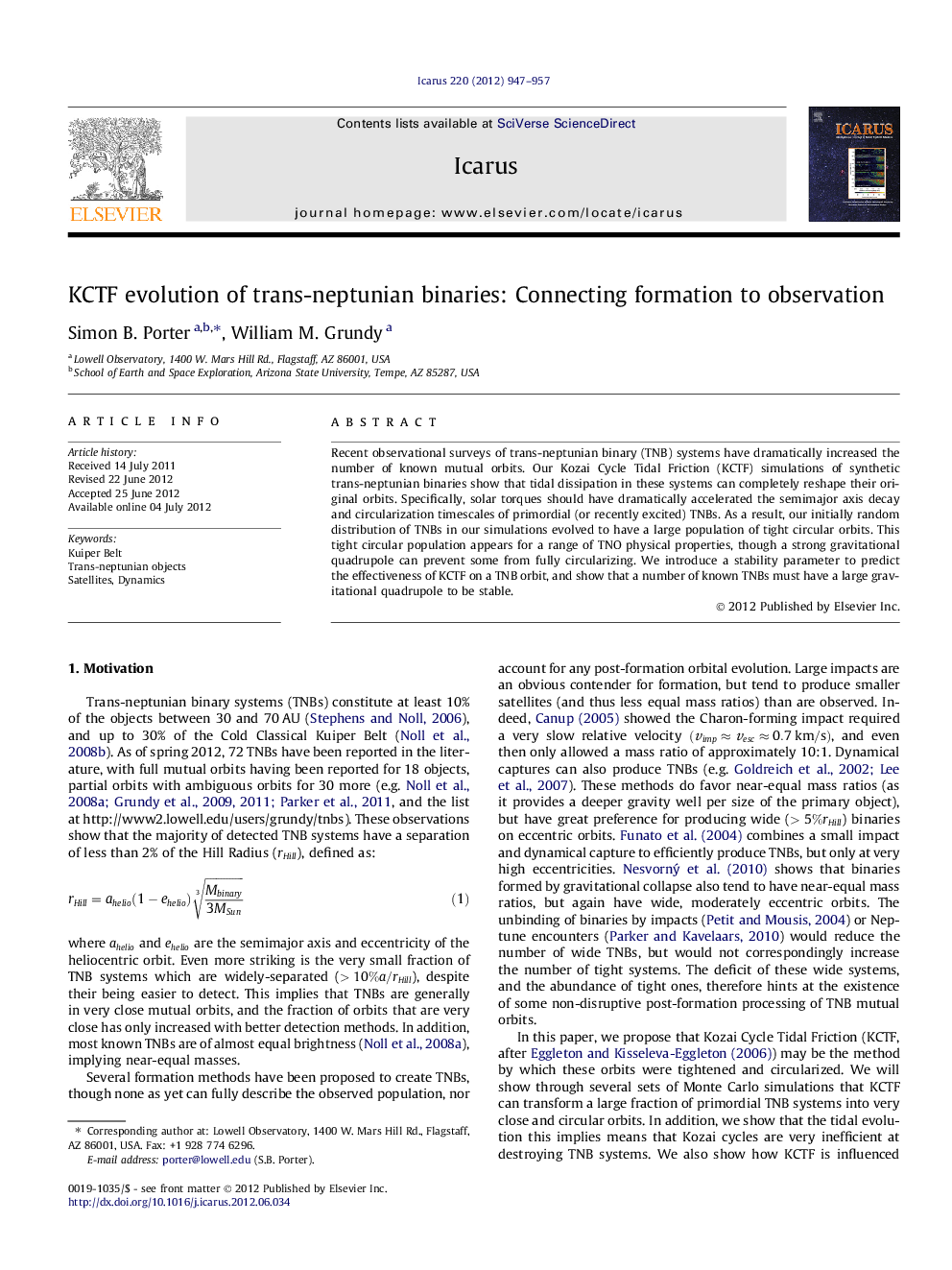| Article ID | Journal | Published Year | Pages | File Type |
|---|---|---|---|---|
| 1773456 | Icarus | 2012 | 11 Pages |
Recent observational surveys of trans-neptunian binary (TNB) systems have dramatically increased the number of known mutual orbits. Our Kozai Cycle Tidal Friction (KCTF) simulations of synthetic trans-neptunian binaries show that tidal dissipation in these systems can completely reshape their original orbits. Specifically, solar torques should have dramatically accelerated the semimajor axis decay and circularization timescales of primordial (or recently excited) TNBs. As a result, our initially random distribution of TNBs in our simulations evolved to have a large population of tight circular orbits. This tight circular population appears for a range of TNO physical properties, though a strong gravitational quadrupole can prevent some from fully circularizing. We introduce a stability parameter to predict the effectiveness of KCTF on a TNB orbit, and show that a number of known TNBs must have a large gravitational quadrupole to be stable.
► KCTF can significantly transform the orbits of trans-neptunian binaries. ► A large fraction of random TNB systems decay to close, circular orbits. ► Shape effects can halt KCTF, explaining some observed systems.
